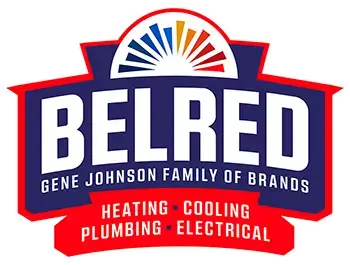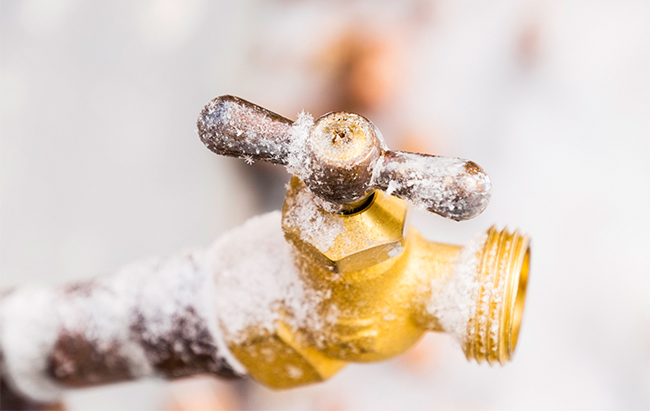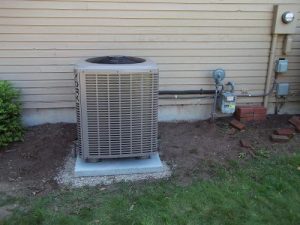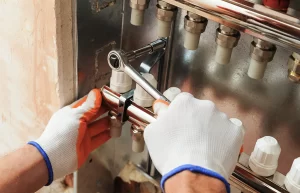When a freeze hits Seattle and the surrounding areas, it hits hard. Hard freezes can last for several days or even longer and most homeowners find themselves unprepared. Under insulated or uninsulated water pipes are susceptible to freezing closed, or in the worst-case scenario, splitting from the freeze. But there’s hope! Read on to discover what you can do to protect your home from freeze damage.
- Piping located in under-insulated or uninsulated areas like attics and crawl spaces are vulnerable and should be insulated to an R-4 rating, which a specialist can assist with. Pipes that are run in areas close to crawl space vents and outside walls are also vulnerable. Pipes in attics can be especially hazardous if the pipes freeze and split, so extra care should be taken to keep these areas warm and the plumbing well insulated.
- Garden hose bibbs should be removed and stored for winter. Leaving the hoses on prevents the bibbs from draining out as designed and freeze splits usually don’t show themselves until spring when you try to use the bibbs for the first time. Hose bibb covers installed in the fall make it impossible to leave hoses connected during freezing weather.
- Sinks located on “outside walls”, like kitchen sinks, are in danger of freezing in extremely cold conditions. When the weather service reports a coming cold snap, it’s a good idea to leave cabinet doors open and remove insulators like household chemicals, etc. The warm air will help keep pipes from freezing. Don’t forget to put these chemicals in a safe place away from children and pets.
- Trickling water keeps pipes from freezing because you no longer have stagnant water. Weigh the benefits of non-frozen pipes with the higher water bill that will follow.
- Some plumbing systems come with isolation valves that suspend water to locations like outbuildings and unprotected faucets outside. Know where these valves are and be sure to test that they work during warm weather to make sure they isolate completely.
- If you have outside faucets or hose bibbs that drip, have these repaired before a cold snap hits.
- Identify the location of your main water shut off. Make sure all household members know where they are and how they work. If they don’t completely shut your house down or are located in an inconvenient location, schedule one of our plumbing specialists to restore their serviceability and/or move them to a usable location. If you have an older home with no interior isolation valve, your water meter has a shut off attached. The meter is off when the two holes line up. Some meters require 90 degrees and others 180 degrees to turn them off. Meter wrenches can be purchased at a hardware store for less than $20. Some jurisdictions will fine you if you use your meter’s shut off to isolate your house. However, in an emergency, you have the right to protect your property. The experts at BelRed can install a premise isolation valve if you don’t have one. If you have a “bar” at the front of your house to turn your water off, they tend to be unreliable and we recommend that they are updated to an interior shut off whenever possible.
- Water heaters are required by code to have an isolation valve on the “cold” or right-hand side of the inlet to the heater. Don’t forget these when performing winter preparation.
- Gas meters won’t be affected by a freeze, but a natural disaster can occur that can make a gas leak catastrophic. Hardware stores sell gas meter wrenches, but you can also use an adjustable wrench to shut gas meters off, too. If you decide to hang one of these on your gas meter to be prepared, make sure you pre-adjust the jaws to the desired size of the gas meter isolation valve. That way, when the wrench rusts, and it will, it will rust to the size of the shut-off valve. Gas meters are off when the two holes on the shut-off line up. Unsure? Familiarize yourself when there is no emergency. We can also install earthquake valves that will shut the flow of gas off to your house in the event of a seismic emergency. Please call us for more information.
- Leaving the heat off in a normally occupied space when you travel without first winterizing the space can prove catastrophic. Frozen pipes in this instance are not nearly as worrisome as the piping can be when it thaws. If you will be away from home, keep the structure warm and follow the steps above for keeping your pipes warm.
- If you do encounter frozen pipes, it’s important that you protect your home from burst pipes once the space warms. Because your piping may have frozen, it doesn’t necessarily mean that you will have broken pipes, but they are common. If you have lost all or part of your plumbing due to a freeze, it’s important to turn your water main “off” whenever you aren’t close to the affected plumbing. As the piping thaws, freeze breaks can surface and may cause considerable flooding. By keeping your water main off as the thaw begins, and introducing pressure slowly in a controlled manner will greatly reduce water damage. Having help in the space as you reanimate the system will allow you to quickly turn the water back off if a burst pipe surfaces. You may not always see the water as the piping may be behind a wall, but the sound is unmistakable. Leaving the water “on” during a thaw, especially while you’re sleeping or away, can prove costly. These situations are extreme, but they happen often enough that we’ve designed these guidelines to protect against water damage.
BelRed is committed to helping you protect your property from winter damage. Our experts have the solution to of your heating and cooling or plumbing needs. We specialize in maintenance, service and repair, from furnace installation to heat pump repair and more! Contact us today!








